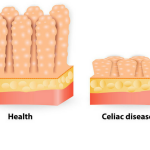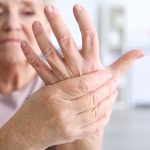Digestive, Skin, Immune Issues: A Complicated Case
MATTHEW STRICKLAND, ND
LW, a 22-year-old female, presented to my office with a problem list that included digestive issues, skin issues, weak immune system, food/allergy sensitivities, and hormonal imbalance. LW reported that all of her health problems started at age 14. There were no major changes in stress at the time, and no traumas or physical injuries. Her diet hadn’t changed substantially at symptom onset. Two weeks before the onset of symptoms, she received the vaccine for the human papillomavirus (HPV).
Symptoms & History
LW’s symptoms started at age 14 with a racing heart that would cause a loss of sensation in her limbs; a decrease in appetite; trouble sleeping; and random episodes of lightheadedness and bloating. She had increased levels of fatigue, and she started having skin breakouts. She was evaluated by a cardiologist and other specialists. No major abnormalities were found. She dropped out of middle and high school because of fatigue that was at least partially due to her insomnia.
Things worsened at 19 years of age when she joined her husband to live overseas. Her menses stopped, she became constipated, the bloating worsened, and she developed cystic acne.
At her initial presentation 3 years later, LW’s symptoms included acid reflux, nausea, vomiting, bloating, constipation, dysmenorrhea, dry skin, dizziness, night sweats, shortness of breath, chest pain, and acute episodes of edema. She also had headaches, muscle aches, low back pain, numbness and tingling in her toes and fingers, mood swings, and easy bruising.
She had been evaluated by a cardiologist, which included wearing a Halter monitor. All tests came back normal. A CBC, CMP, Lipid panel, and Vitamin D were run following her initial visit. Platelet count, MCHC, MCV, Hemoglobin, and Hematocrit were all within normal limits. Albumin and Globulin were also normal. The only results that were out of range were a WBC count of 12.8 (normal range, 3.8-10.8) and Absolute Neutrophils of 10 150 (normal range, 1500-7800).
Her supplement list included evening primrose oil, omega-3 fatty acids, Vitamin B12 (10 mg), and digestive enzymes and HCl/Pepsin with every meal.
She described a thirst that was unquenchable; she drank between 3 and 6 liters of water per day. She was always extremely fatigued on waking. From noon to 2 pm, she was also very tired. Her energy was much better at night; she would usually exercise between 9 and 10 pm. She craved spicy foods, sweets, and chocolate. She was averse to bread, greens, and starches. She felt no change from being in the sun, and her symptoms were better with pressure. She described herself as laid back, not at all competitive. She had episodes of irritability.
Because of the lack of improvement from the supplements she was already on, the diversity of body systems affected by her illness, and the fact that serious organic pathology had been ruled out, I decided to use homeopathy.
Repertorization, Treatment, & Follow-ups
After taking LW’s full homeopathic case, I repertorized the symptoms listed in Figure 1.
Figure 1. Repertorization

Recommendation: I directed LW to take the homeopathic remedy Bryonia alba in the 6C potency, once daily, and to follow up in 6 weeks.
One of the challenges in homeopathy is that the remedy isn’t given for a single symptom, but rather for the totality of the patient – all symptoms and characteristics, including mental, emotional, and physical. Oftentimes, after repertorizing a patient’s symptoms, the top remedies that come up are not the best fit for the patient. In this case, Bryonia was ninth in the list.
The best way to think about remedy selection in homeopathy is that the goal should be to match the whole picture of the patient with the whole picture of the remedy. Understanding the picture of each remedy takes time through study, both with experienced practitioners and with a materia medica, which provides a compilation of each remedy and a list of its characteristics and symptoms – mental, emotional, and physical. With time, various pictures of each remedy emerge. When taking a case or reading across a selection of remedies while repertorizing, a homeopathic practitioner works to match the picture of the remedy with the picture of a patient. Again, this is done by matching based on clinical experience and referencing a materia medica.
In my patient’s case, Sulphur (the first-listed remedy) was not a good fit because the classic picture of a “Sulphur patient” is someone who generally is very warm, extroverted, probably a little messy, easygoing, and not particularly thirsty. It’s important to note that a Sulphur patient can be introverted or thirsty, or be on the neater side; in other words, he or she can have any symptom or characteristic that isn’t generally associated with Sulphur. However, the further a patient diverges from the constitutional picture of Sulphur in terms of each symptom and characteristic, the less likely it is that the remedy fits their constitution, ie, who they are as a whole. In the process of selecting Bryonia for the patient, I was working down the list of remedies. Her strong thirst and marked dryness, without a medical cause like diabetes, helped me rule in Bryonia. She also had arthritic pains, and her complaints were generally better with pressure. All of these fit the Bryonia picture.
Six Weeks Later
At her 6-week follow-up, LW reported a marked improvement in all chief complaints. Previously, it had been taking her multiple hours to fall asleep; she was now sleeping all night. She added that she couldn’t remember the last time she had been able to just lie down and go to sleep. Her energy might have been the most notable change: “Now I have so much energy.”
She described her mood as being better. She had just finished her menstrual cycle and didn’t experience the usual mood changes. The episodes of nausea upon waking had stopped. She mentioned having a couple of headaches in the days leading up to the visit; however, they weren’t as bad as they had been and didn’t get to the level of migraine. The back pain was better and she was able to exercise longer. Her excessive thirst had normalized; she was no longer thirsty all the time. She had no more episodes of edema after starting the Bryonia. Her food sensitivities had decreased.
At her first visit, she had noted she was on a gluten-free diet because gluten caused acne, bloating, and constipation. However, between her initial visit and this 6-week follow-up she had eaten multiple desserts containing gluten and no symptoms were triggered. Her digestion was regular, and she continued to take a digestive enzyme with every meal.
She also described herself as being able to handle stress much better. She felt less sensitive, both physically and emotionally, and a family situation that was previously causing stress was no longer stressful.
Because of the marked improvement that had not plateaued, I recommended that she continue with the Bryonia 6C once daily and to follow up in 3 months.
Three Months Later
At her second follow-up, 3 months after her last one, LW reported continued improvement. Her energy before taking the homeopathic remedy was “terrible,” no matter how much sleep she had. She now rated her energy as 10 on of a scale of 1-10. She was exercising twice per day; previously she would only exercise for 30 minutes and then feel tired for the rest of the day.
She was continuing to handle the family stress well. Previously, she had reported that the stress was “all encompassing.” She now felt able to categorize things. She said, “I feel like a different person.”
The moderation of her thirst had continued; she previously felt like her life “revolved around water.”
She hasn’t had any episodes of nausea upon waking; prior to the homeopathic remedy they had been a daily occurrence. Her digestion continued to be normal. Previously, the bloating had been severe enough to make her “feel like a pregnant woman all the time.”
LW had experienced 1 migraine since her last visit, which she attributed to not sleeping well the night before. The pain reached a level of 6 on a scale of 1-10.
Her food cravings had normalized; previously, she had described having a “huge” craving for sweets.
She hasn’t had any episodes of shortness of breath or numbness since the last visit. The back pain, which used to occur anytime she sat for more than 10 minutes, was now gone.
She described her periods as being heavier since the previous visit, but her premenstrual symptoms as less. Her libido, which she had described as excessive, had normalized.
Recommendation: I instructed LW to continue on the Bryonia 6C, as well as the other supplements she was taking, and to follow up in a few months.
Four Months Later
At LW’s final follow-up, 4 months after the previous visit and 8 months after her initial presentation, she reported sustained improvements.
In the time between the last follow-up and this one, she had flown home for the holidays. She would previously develop edema on the flight home; however, this time it didn’t happen. She had initially reported having a difficult time dealing with the large amount of stress with her family. She now reports being able to deal with family stress and walk away from it. She has started a job and has enrolled in a full-time degree program, where she is doing well. Her menstrual cycles continue to be normal.
Since the last visit, she has tapered off the digestive enzymes she had been taking since her initial presentation. She continues to take the homeopathic remedy Bryonia 6C once daily, a probiotic, vitamin B12, omega-3s, evening primrose oil, and an adrenal glandular.
Because she and her husband would like to conceive, she was recently evaluated by her gynecologist. All tests were within normal limits.
Homeopathy’s Holism
I like this case because it’s representative of how a number of cases present, how illness often isn’t 1-dimensional. Very often, a patient comes in with a list of chief complaints rather than a single issue. In this case, each of the 5 lines on my intake form for “current health concerns” was filled in. It became clear during the intake that virtually every body system was affected by the illness. In conventional western medicine, a specialist would typically be assigned to look at each of those affected systems in isolation: a pulmonologist for respiratory issues, gastroenterologist for the digestive issues, cardiologist for the heart, etc. For her presenting symptoms of chest pain, shortness of breath, and edema, it was important that she was initially evaluated by a specialist; after all, these can be signs of serious, if not fatal, health conditions. In her case, potential problems with her heart or circulation were ruled out, yet she was still suffering.
One of the challenges in medicine is being able to hold multiple perspectives at the same time, to work with 2 or more different truths. There is the mechanistic, biochemical truth in which western medicine partially excels – the truths that have discovered the microbe and the genome, the lab tests that can measure hormone levels with spectacular precision, the instruments that can provide an image of the inside of a human body without breaking the skin. I say “partially” because even within the conventional western mechanistic model, there is an absence of training in herbal medicine, vitamin therapy, or nutrition, which all work within the biochemical framework. These modalities can often have a large impact on human health and wellness, and generally have fewer side effects than a manufactured chemical or protein or surgical procedure.
Another truth is the gestalt, the whole picture, the stepping back from the brush strokes to see the whole painting. With homeopathy the goal is to match the picture, the whole set of symptoms – mental, emotional, and physical – with the picture of the remedy. When the symptoms of the patient in their totality match the symptoms of the remedy in its totality, profound healing can occur.
It’s easy to dismiss homeopathy as placebo because the principles according to our current biochemical model seem absurd. As a homeopathic remedy is prepared, it is diluted from the mother tincture of the substance and potentized, ie, made stronger, by successive diluting and shaking. The goal of the practitioner prescribing the homeopathic remedy is to match the symptoms of the patient in their totality with the symptoms produced by the substance (the homeopathic remedy). Research has shown again and again that homeopathy works in animals1–3 and even in microbes4,5 where the placebo effect doesn’t apply. In some cases, there is a slight aggravation of symptoms before healing occurs; again, this can’t be explained by the placebo effect.
It is my hope that this case shows both practitioners and the public alike the role that homeopathy can play in integrative care, its ability to relieve suffering, and at times to promote radical healing in cases where no other medical perspective has offered hope or help.
References:
- Werner C, Sobiraj A, Sundrum A. Efficacy of homeopathic and antibiotic treatment strategies in cases of mild and moderate bovine clinical mastitis. J Dairy Res. 2010;77(4):460-467.
- De Souza MF, Costa-e-Silva EV, Macedo GG, et al. The effect of individualized homeopathic treatment on the semen quality of bulls with reproductive disorders: a case series. Homeopathy. 2012;101(4):243-245.
- Biswas SJ, Khuda-Bukhsh AR. Effect of a homeopathic drug, Chelidonium, in amelioration of p-DAB induced hepatocarcinogenesis in mice. BMC Complement Altern Med. 2002;2:4.
- De A, Das D, Dutta S, et al. Potentiated homeopathic drug Arsenicum Album 30C inhibits intracellular reactive oxygen species generation and up-regulates expression of arsenic resistance gene in arsenite-exposed bacteria Escherichia coli. Zhong Xi Yi Jie He Xue Bao (Journal of Chinese Integrative Medicine). 2012;10(2):210-227.
- Das S, Saha SK, De A, et al. Potential of the homeopathic remedy, Arnica Montana 30C, to reduce DNA damage in Escherichia coli exposed to ultraviolet irradiation through up-regulation of nucleotide excision repair genes. Zhong Xi Yi Jie He Xue Bao (Journal of Chinese Integrative Medicine). 2012;10(3):337-346.

Matthew Strickland, ND is a leader in integrative, functional, and naturopathic medicine. He treats patients at a distance, as well as in-person at his clinic, Southeastern Integrative Health and Wellness, in Durham, NC. Dr Strickland is currently serving as Vice President of the North Carolina Association of Naturopathic Medicine.










